Bamboo Before and After
It's the time of year that I have mixed feelings about: bamboo chopping time. It's a happy time because it means that spring is here and the bamboos are pushing out new growth, but it's also a sad time as it means that all of that lovely foliage will be gone for a few weeks or more.
To be clear I'm talking about the shrub and groundcover bamboos only, as the tall (arboreal) types don't need this annual pruning and cleanup. I was pretty thorough for once in getting before and after shots of all of these, so you'll hopefully see the two sides to this activity. It's also a long post so you'll get a feel for how much effort I need to expend on these every spring.
I always start my spring cleanup with the front garden, as that's what the neighbors see. The Sasa tsuboinana (I hope?) was a temporary planting one year but I really liked it so have left it. I keep it to a very small area with rhizome pruning.
The grass (Hakonechloa macra) has slowly become a knockout over the years, and it works so well with the Sasa. The real star of this bed will be the Alocasia macrorrhiza that will occupy the big pots soon.
You may be wondering why I trimmed the bamboo back when it looked so green and nice. I've learned from experience that it only looks great because there's nothing to compare it to yet. Once the new growth emerges on it and on the surrounding plants, those leaves that overwintered will look tired and a bit ratty -- so I remove most of them.
Here's a great example by the mailbox:
That's Sasaella masamuneana 'Albostriata', looking fine...
...until you look closely and see the winter damage. Also, although the variegation is still visible...
...it's nothing compared to what the new leaves will have. They're so creamy and pristine, just beautiful. So this one gets a chop too:
I've never been able to bring myself to use the lawn mower on these, instead relying on my hedge pruners to trim them by hand. (I don't want to trim them that low.)
More examples:
That's Indocalamus longiauritus in back (green), Pleioblastus fortunei in the middle (brown), and Sasaella bitchuensis in front (green).
Note that with smaller plantings that are not yet established (as big as I'd like) I don't trim any leaves that contain any green:
Those leaves will feed the plant while its putting out new growth, and new growth is what I want to maximize. I'll trim off any ugly leaves after the new stuff has finished emerging.
Pleioblastus distichus, the smallest and possibly most vigorous spreader gets brushed to knock off most of the dead leaves, then a little trim:
New growth emerges pretty early on this one.
This Pleiblastus shibuyanus 'Tsuboi' was not an easy decision:
Remember that I wasn't overly pleased with the way it had a two-stage look to it, with last year's growth shooting above the bushier main plant. Hopefully you can see that in the above photo.
I decided to solve this by chopping everything lower than I ever had before:
The main bushy part is about half the height it was before.
I'm not sure if this will really work, as I expect those outermost culms to die now -- they most likely don't have the ability to create new branches and leaves so low down. We'll see what happens when the new shoots come up!
I had to prune the Euonymous too. Here's a before and after in the same shot:
The first one is easy to chop, the second much more difficult because it needs to match the first to some extent. I probably should have pruned these a few weeks ago but since the deer prune them all winter long I'm not concerned about them leafing back out.
There's a newer planting of Pleioblastus fortunei in front of the Euonymous:
That plant always defoliates each winter, unless it's exceptionally mild. We did have a mild winter overall, but it did get down below 10ºF (-12ºC) once and that's what zapped all of the leaves on this one.
There is some protected growth down low...
...that I'd like to keep intact. So I just clipped the tops off of these -- took just a minute because this is a small planting yet. It should look pretty nice and full this year after shooting -- we'll see soon!
Moving on to the back garden, I started with the patch of Pleioblastus viridistriatus under the bald cypress tree:
This will soon be a bed filled with such a vibrant color, if you remember from previous years. I can't wait as I hate seeing it mowed down like this. I used the hedge shears on this one, and I have to say that it's a great upper arm and shoulder workout. Arms so tired after finishing!
Next up was Semiarundinaria okuboi:
My first thought was to remove the tattered leaves, but then I realized that more pressing might be the culm congestion:
So I removed many dozens of dead culms...
...which really opened up the plant!
Here's the before again:
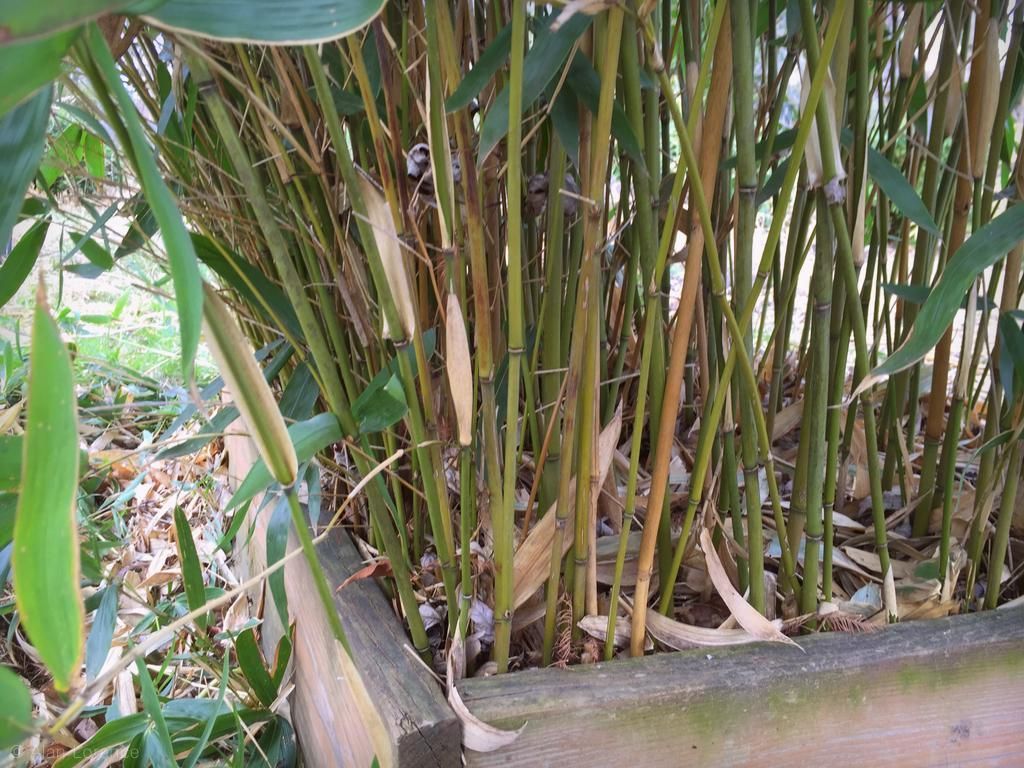 |
| Before decongestion |
You can see daylight through the culms now, which is good.
I still need to remove more tired leaves, but this looks so much better now!
Behind the S. okuboi the Hibanobambusa tranquillans 'Shiroshima' is quite beat up, pretty much every leaf with some brown on it:
I don't like to cut this one to the ground though, as it's really stunning when it holds fresh foliage and I want it to have as many leaves as possible. So I spent a good 30 minutes cutting off the tired leaves one branch at a time with hand pruners. This preserved as many of the new branch buds as possible...
...even though the end result is quite unimpressive right now:
Looking at it next to the Indocalamus sp. 'Solidus', you can see how tired the Siroshima looked before (on the left)...
...and how sparse after:
Even though that 'Solidus' has a few burned leaves, it's really in good shape so I decided not to trim it back (at least for today). I'll remove a couple of the worst leaves if needed later. The deer like to eat the shoots of this one for some reason, which reminds me...
I haven't been specifically saying it, but when pruning these smaller bamboos I'm also rhizome pruning around them. Most of them have a little space to spread, but all of them need to be kept in check! (And I've just reminded myself that I skipped rhizome pruning a couple in the front yard...)
The biggest "grove" -- which doesn't sound like the right word for plants of this size -- is the Sasaella bitchuensis under the silver maple, next to the pond:
I have to admit that I let this one spread a bit further than I initially wanted it to, but after seeing the results it's here to stay. It's a great "anchor" plant for this back area, the large leaves making a larger planting more appropriate. So nice...
...but still gets chopped back! (Another good workout with hedge clippers)
I was able to pot up five or six divisions from this after rhizome pruning. I could have made probably 20 more if I wanted to pot up every rhizome, but those scraps will be left out to dry and then into compost.
The other big patch is Pleioblastus fortunei at the north side of the yard:
Like I said, this one loses all of its leaves almost every single winter.
I was not diligent with rhizome pruning on this one last year, and it spread almost into the veggie garden (just out of frame at the left edge of the photo above). I dug and potted several divisions, which left this area...
...in good shape for some new planting. I don't think I'm going to let the dogbane grow back here -- it just gets too big! The new fence will be completed very soon, so this area will get some love from me.
 |
| Rhizome scrap pile. I just couldn't pot them all up. |
There are five bamboos along the driveway that I cleaned up too, but I'll only show the Sasa veitchii here:
So sad to see that one go. Sigh.
So much bamboo cleanup (and rhizome pruning!) but it's a once-a-year thing and will be worth it when the new growth pushes. Very much like ornamental grasses, but on a bigger scale.
Feels so good to be finished with these! (Well, almost. There are a couple more that need to be rhizome pruned still...)
.





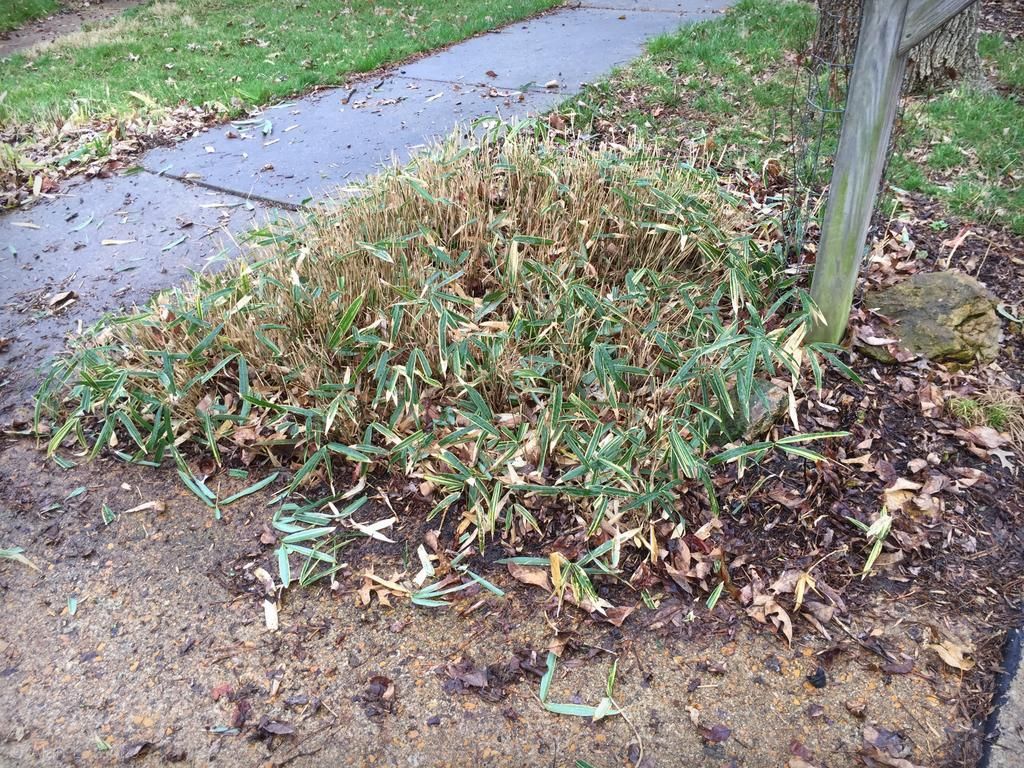



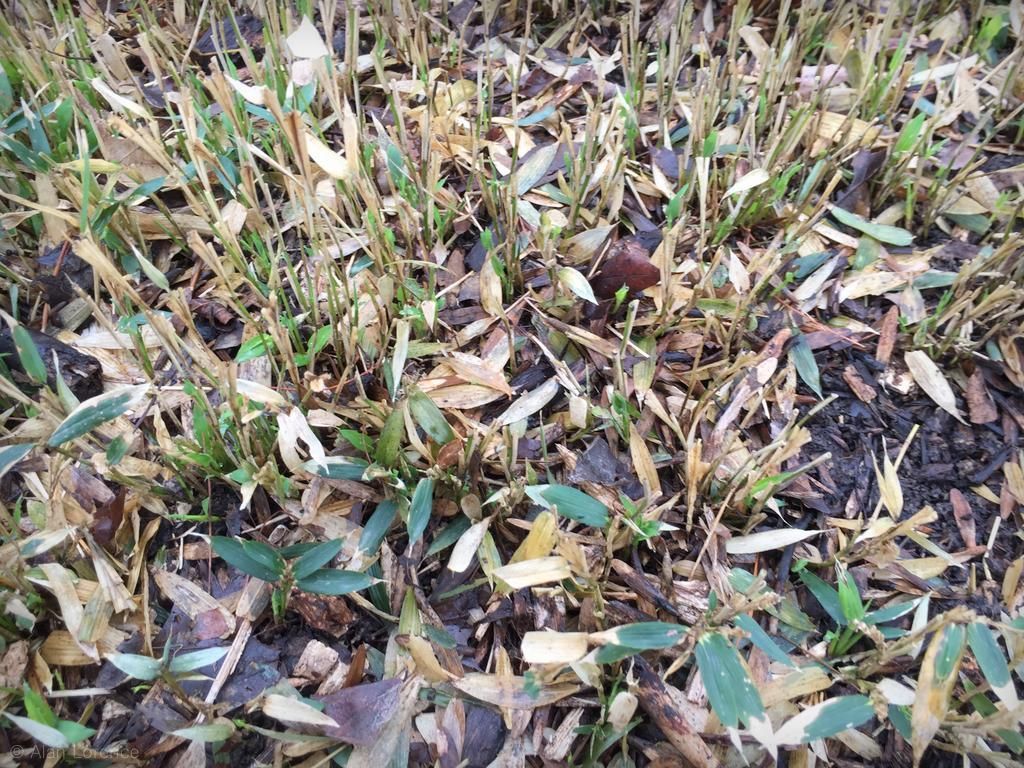


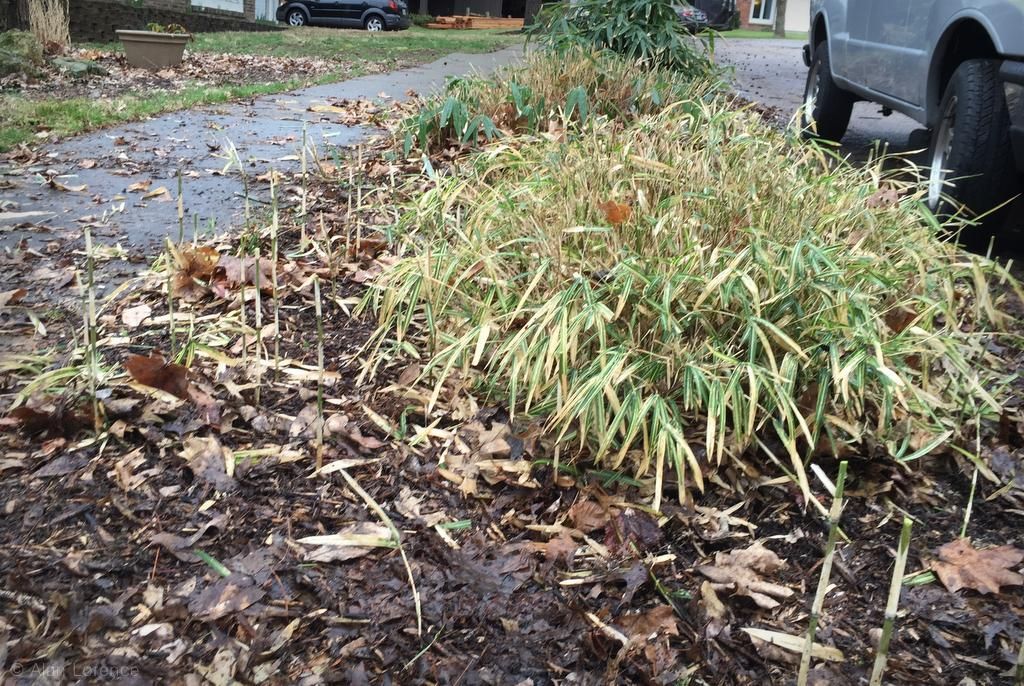
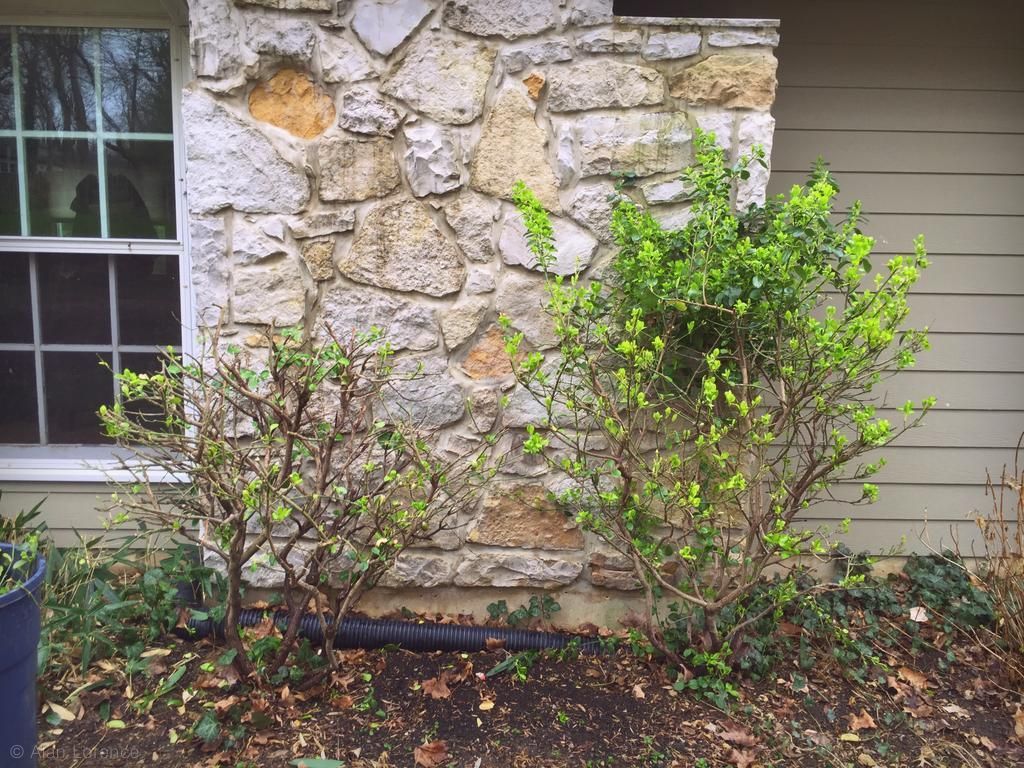
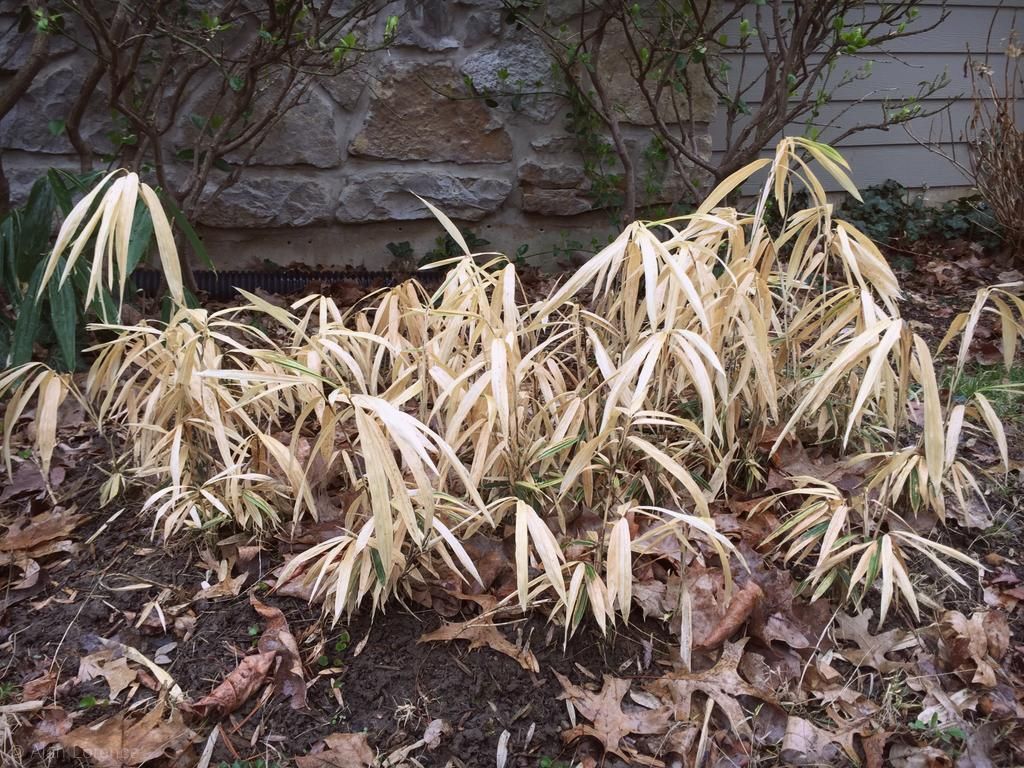



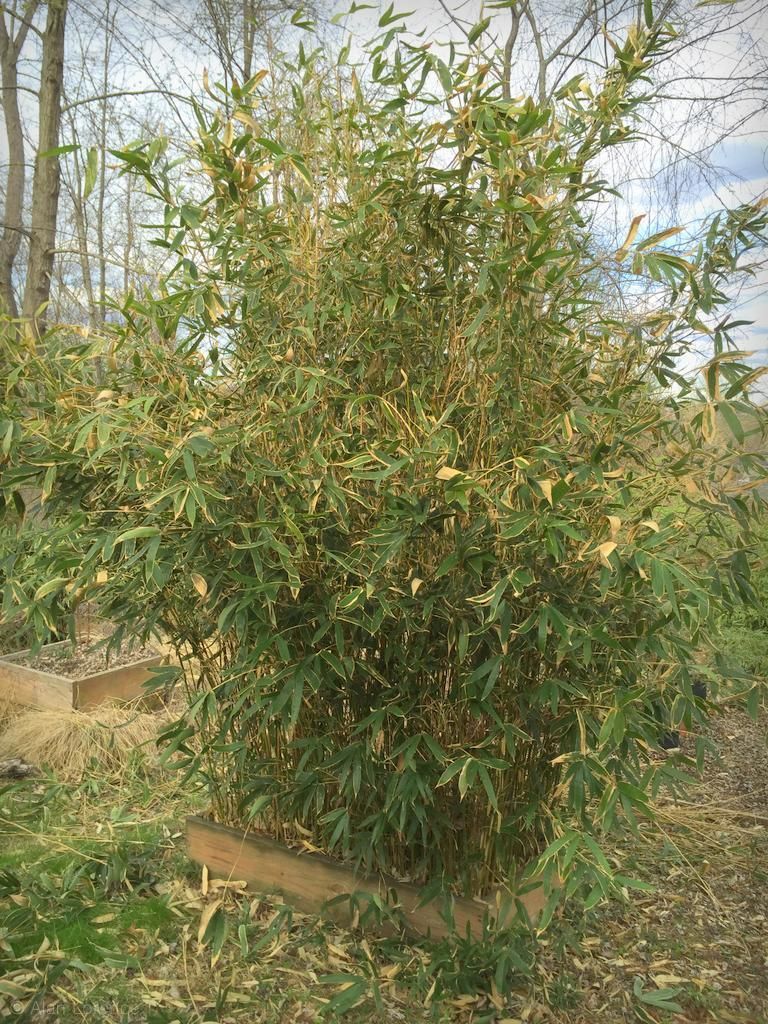


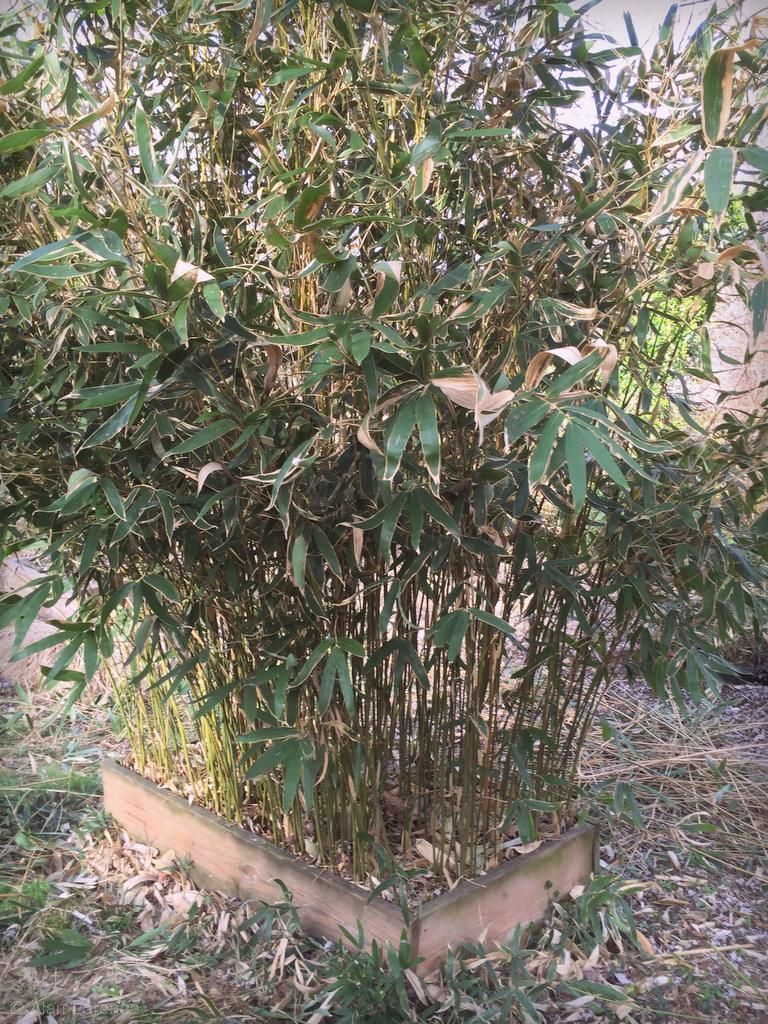


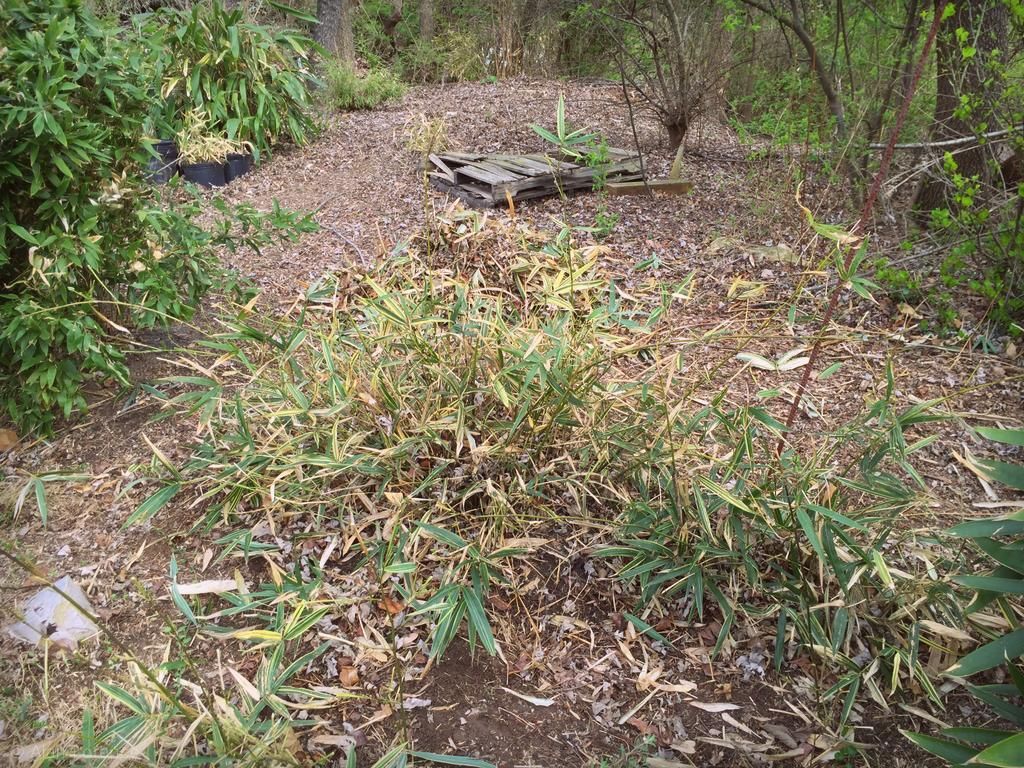
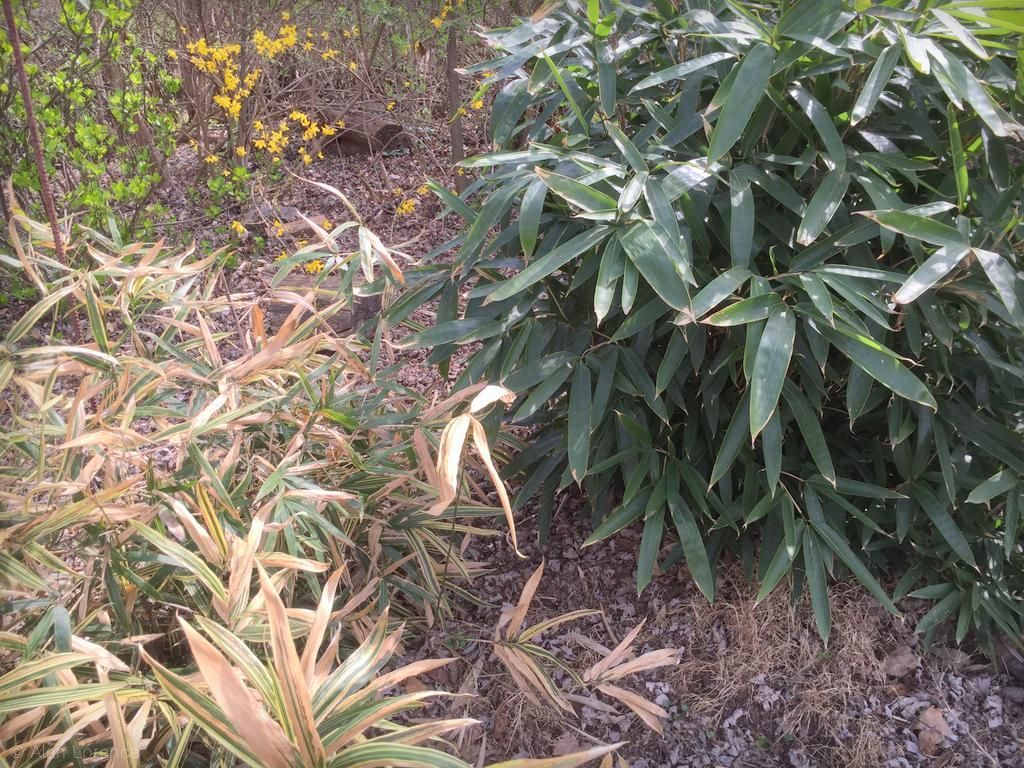


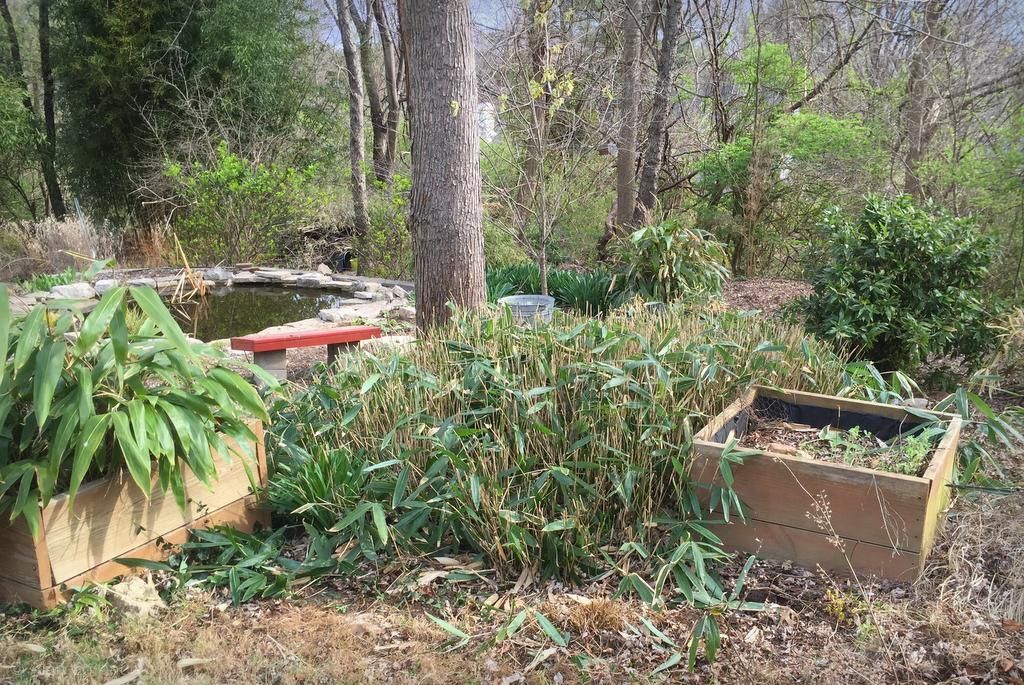









I guess we all have to work for our love! I can't wait to see how everything looks over summer. I love the leafiness (is that a word?) Of your garden!
I'm exhausted! That's a lot of work Alan.
Here it was time again to trim the Sasa palmata. The old culms had gotten so tall and the ice in January did a lot of damage. I'm just not willing to let if flop 5 ft over the patio. Plus a lot of the leaves were looking ratty. I cut out about 80% and then gave the container a nice dressing of milorganite. I'd be worried if I hadn't done this one before and seen how fast it fills back in.
I only have one bamboo that gets trimmed with the hedge scissors each spring. I can't believe how much bamboo/how much work you have. Impressive!
Your yard is awesome but this post has convinced me that I never want to try bamboo in my yard ever! Especially the part about rhizome pruning! **shiver*.
Renee: Thank you. "Leafiness" seems right to me. :)
Loree: It's not work... :) It's certainly not something I did in a single day -- I hope I didn't give that impression!
Peter: Only one? No wonder you're always in such a good mood! ;)
Mutiny: That's a little disappointing. I know it's not for everybody but it's a very rewarding plant, especially in winter. Much less maintenance than a lawn or veggie garden too.